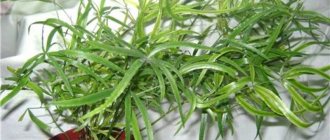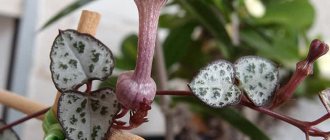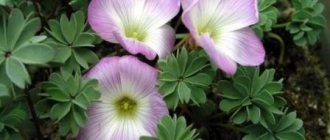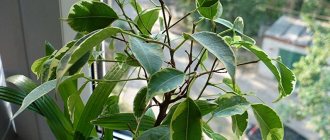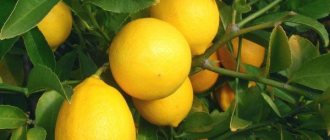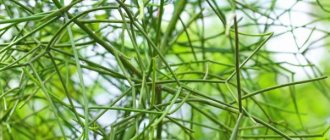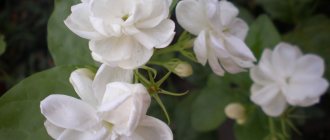Designers and florists appreciated the Cirrus variety for its lush appearance, as well as for its ability to grow upward with the help of supports and hanging in flower pots, cascading with waterfalls of lacy shoots. It adapts well to the room and thrives in completely artificial lighting, which makes it popular in office landscaping. Feathery asparagus is often grown at home due to the fact that caring for it is not particularly difficult, and its delicate greenery will decorate any interior.
In Feng Shui philosophy, shrubs are classified as species that cleanse the home of negative energy and help people during periods of emotional decline or depression. Lush bright shoots are used by florists in bouquets, and in alternative medicine, tincture from this plant is used to treat various diseases.
Peculiarities
An interesting plant for indoor gardening and for bouquet arrangements. In winter it should be kept at a temperature of +15 °C. Grows well in a warm room, protected from direct sunlight. Pinnate asparagus is moisture-loving; it is advisable to spray the plants, since asparagus does not like dry air. For the first two years, the plants are kept without support, then it is necessary to install a trellis to support the plant. Regular care: watering, removing yellowed shoots, etc. In soil culture, asparagus is grown in a mixture of loose turf, leaf, peat soil and sand (1: 1: 1: 0.5). In the hydroponic growing method, asparagus is kept on an expanded clay substrate. When grown on ionite “soil” (ionite resin mixed with crushed expanded clay), asparagus grows magnificently in any containers, without requiring replanting or transshipment for two to three years. Cut asparagus shoots are used for compositions, bouquets, kept in hanging vases, etc.
Soil for homemade asparagus
The best time to transplant asparagus at home is spring. A plant starting a new growing season will easily tolerate the procedure and quickly begin to grow.
An indoor flower that is unpretentious to the composition of the soil can grow in nutritious, organic-rich, loose soil.
As such a substrate you can take the following mixture:
- 2 parts of garden soil;
- 1 part humus;
- 1 part sand, which can be replaced with perlite or verticulite.
If the soil is mixed independently, it is important to disinfect and sterilize all components of natural origin to prevent pests and pathogens from entering the asparagus pot.
When the necessary components are missing, they can be replaced with universal soil for indoor plants with a small addition of perlite. When replanting asparagus, we must not forget that the plant needs drainage, which is made from fine expanded clay or gravel.
Sooner or later, a growing pet will force the owner to think not only about how to replant, but also how to propagate homemade asparagus. Most often, for this purpose, an adult bush is divided during transplantation, but if desired, young plants can be obtained using cuttings or seeds.
Asparagus pinnate. Care
Asparagus pinnate is a rather unpretentious plant. Loves light, but may suffer from direct sunlight. In summer you can keep it in the open. It will be a wonderful decoration for your balcony or help create a tropical corner in your garden.
Air temperature
In winter, pinnate asparagus is also kept in a bright place, but it is advisable to lower the temperature to 12 degrees. At temperatures above 15 degrees, the stems may gradually shed phyllocladiae and the plant may dry out.
If such a problem has already happened, the stems are cut and watering is reduced. By the end of winter, new shoots will appear and your plant will turn green again. The plant tolerates small temperature fluctuations well.
Watering
Asparagus trees need to be watered abundantly and regularly, especially in spring and summer. At the same time, care must be taken to ensure that water does not stagnate in the trays and that the soil in the pots does not dry out. At home, it is recommended to spray asparagus frequently.
Plant nutrition
Feed pinnate asparagus weekly from spring to autumn, and once a month in winter. For feeding, use ready-made fertilizers for indoor plants. In summer, you can water it with a weak infusion of slurry or an infusion of green plants. If your pinnate asparagus blooms, which happens very rarely at home, you need to pollinate the flowers yourself.
With successful pollination, the plant produces bright red berries. When asparagus is kept outdoors, it grows a lot, so you need to trim it before taking it home. Simply because it will take up too much space.
Kinds:
Asparagus asparagus, or asparagus-shaped (Asparagus asparagoides (L.) Druce.) . It grows wild in mountain forests and coastal sands of South Africa. The stems are bare, light green, with flexible thin shoots. Phyllocladia (modified stems) are leaf-shaped, ovoid, shiny, bright green. The flowers are small and white. The fruits are orange-red berries. Its one and a half meter creeping shoots sometimes require support. Cut shoots of this asparagus retain their freshness for a long time, so they serve as a good addition when arranging bouquets and flower arrangements. Interestingly, the fruits of this species have an orange scent. This species is very good on a support and as an hanging plant.
A. plumosus Baker . It is found as bristly Asparagus (A. setaceus Jessop.) . Homeland: Eastern and Southern Africa; grows in subtropical and tropical forests, river valleys, savannas, plains and in the middle mountain zone. Climbing subshrub. The shoots branch abundantly and are bare. The leaves are reduced to tiny (0.5 cm) terangular brown scales. The modified stems (phyllocladia) resembling thread-like leaves are collected in bunches of 3-12. Their length is 0.5-1.5 cm, diameter - up to 0.5 mm. They are slightly curved, light green, and give an openwork appearance to the entire plant. Individual shoots are oriented horizontally, forming something like finely feathered leaves. The flowers are small, single or 2-4, white. The fruits are berry-shaped, bluish-black, 1-3 seeds. A fairly well-known variety of pinnate asparagus is dwarf asparagus. Perennial unpretentious plant.
A. the finest (A. benuissimus) is very similar to pinnate asparagus, but its phyllocladies are thinner and longer, and are spaced less frequently than those of pinnate. The length of the shoots reaches 1.5 m.
A. Sprenger (A. sprengeri Regel.) . Synonym: A. Ethiopian (A. aethiopicus L.) , found as A. densiflorus Jessop var. sprengeri . Homeland - South Africa, grows on wet mountain slopes. A climbing subshrub, in cultivation a herbaceous perennial plant. Stems are bare, grooved or smooth, abundantly branched, weak, up to 150 cm long. Leaves are reduced to subulate-shaped scales 2-4 mm long. Flattened leaf-like stems - phyllocladies up to 3 cm long, 1-3 mm wide, straight or slightly curved, pointed, single or in bunches of 2-4 cm. The flowers are small white or light pink, fragrant. The fruits are berry-shaped, red, single-seeded. In culture since the end of the 19th century. Loves sunlight and abundant watering in summer. Medium density nutrient substrate (pH 6.5-7.5).
A. medioloides (L. f.) Thunb. is a beautiful tall plant with highly branched stems and evergreen phyllocladies. Its cut branches remain fresh for a long time even without water.
A. racemosus Willd. - has long (up to 2 m) shoots; its linear-subulate cladodes are collected in bundles. Fragrant bright pink flowers form a cluster.
A. falcatus L. is an elegant vine with the longest and thickest shoots among asparagus. In nature, the length of the shoots reaches 15 m, and their diameter is up to a centimeter; in a winter garden or greenhouse, the length of the vine is usually up to 4 meters. Flexible stems quickly grow from the rhizome, covered with many sickle-shaped cladodes up to 8 cm long, with corrugated edges. Their color darkens with age. The plant tolerates stem pruning well and forms a lush bush. Spectacular small white flowers with a pleasant scent are collected in a loose inflorescence.
Dividing a bush is a simple propagation option
It seems that the division procedure must be very painful for the bush. In fact, she only benefits him.
Any gardener can divide the rhizome of a bush into several parts.
Although this will require caution.
It is best to use the transshipment method, then the asparagus root will be almost not injured. Yes, and dividing it into parts in this case is convenient.
The root of each new bush must be shaken off, damaged stems removed and planted in a separate container. The soil mixture should be moderately moist. Too much water can kill the plant.
Young plantings should be placed in a shady corner, preferably the temperature should not be higher than +15 degrees. The bushes need regular watering, and after a couple of weeks they need to be fed.
After a month of careful care, the pots with newly settled asparagus can be moved to a permanent place. Now they can easily tolerate both diffused light and the conditions of a window facing north.
Do I need to replant pinnate asparagus?
Asparagus pinnate grows very quickly, so annual replanting is required. A pot that is too large may simply burst under the pressure of overgrown roots.
Replanting is also required if you have just purchased your asparagus in the store. For transplantation, choose a more spacious pot compared to the old one. The asparagus is carefully removed from the pot, the soil is shaken off, and the rhizomes can be trimmed a little. All exposed old shoots are removed. If your bush is old enough, it can be replanted every two to three years.
Carefully! Asparagus should not be placed in children's rooms, since its berries, attractive to children, are very poisonous.
How to grow asparagus from seeds
Stocking up on seeds will not be a problem: you can buy them in the store, or you can collect them yourself when the plant has flowered and the reddish berries appear as in the photo.
Helpful tip: Keep the seeds in a dry place so that they remain viable for several years.
Propagation by seeds is an all-season event. But most gardeners prefer to sow them in early spring. This allows you to save on additional lighting.
How to sow seeds
You will need a small box or container into which soil, already mixed with fertilizers, is poured. It can be bought ready-made, but in any case it is worth warming up the soil and treating the seeds with a weak solution of potassium permanganate. This will further protect the plants from pests and diseases.
The seeds are distributed at a distance of 3 cm from each other, lightly sprinkled with moist soil.
The box is placed in a plastic bag or covered with tinted glass and placed on the windowsill.
The success of this operation will depend on the care of the plantings. It is necessary that
- the temperature was comfortable (from +21 to +23 degrees);
- the soil was regularly sprayed with settled water;
- The mini-greenhouse was regularly ventilated.
If all this is followed, in about a month you will notice the first shoots. When they reach 10 cm, they should be carefully picked into small pots. 4 months later - transplant into larger pots filled with drainage and nutrient soil.
The root system of young plants is constantly growing, so you will have to replant it into a larger pot once or twice a year.
In this video there are some more practical tips for growing asparagus from seeds:
Why does asparagus turn yellow?
Common causes of yellowness:
- low or high substrate humidity;
- improper lighting;
- burns;
- dry indoor air;
- pot too small;
- nutritional deficiencies;
- severe parasite damage or advanced diseases.
If the plant turns yellow, try to find the cause and eliminate it. General measures include increasing air humidity, organizing proper watering and lighting, applying fertilizers on a schedule and timely replanting the flower.
Microclimate
The plant is unpretentious, but quickly reacts to any mistakes by the grower by changing its appearance. To ensure that the leaves and stems maintain turgor, lushness and green color, consider the following nuances:
- Degree of illumination. Direct sunlight can cause burns and yellowing, so do not leave the plant on the windowsill. Light tulles and curtains are not able to prevent drying out. However, in the dark, asparagus also wilts. The flower should be in a well-lit room. It is advisable to use it in hanging compositions so that there is enough space between the window and the pot. In winter, arrange additional lighting.
- Content temperature. At +10°C the flower is able to survive, but this will inevitably affect its condition. Summer comfortable temperature is about +24°C. During wintering, the readings can be lowered to +16°C.
- Air humidity. At low levels, asparagus begins to turn yellow and shed its needles. To maintain optimal conditions, it is recommended to spray the flower with a spray bottle twice a day. It is especially important to do this in summer due to hot weather and in winter due to drying heating.
Asparagus is able to purify the air in the room, but it does not tolerate drafts.
If there is free space, place the pot and tray in a small container with gravel or expanded clay. Pour water into the bottom, it will gradually evaporate and saturate the air with moisture.
Beneficial properties of asparagus
The most studied for use as a medical raw material is asparagus, it is often used in folk medicine for:
- relief of migraine attacks;
- treatment of inflammatory processes in the urinary system;
- lowering blood pressure;
- removing cholesterol, waste and harmful toxins from the body.
Asparagus also contains many vitamins, amino acids and mineral salts.
Difficulties in growing
Beginning gardeners often have various questions in the process of growing asparagus. Let's look at the most common ones.
- Why do the leaves turn yellow and fall off? This is due to low humidity and overheating.
- Why does asparagus turn pale? The plant does not have enough light.
- Why do leaves become spotted? This may be exposure to bright sun.
- What causes asparagus to wilt? One of the reasons may be excessive moisture and, as a result, rot of the rhizome.
- Why did the edges of the leaves turn brown? The reason is low humidity and exposure to the sun.
- What causes the fruits to become covered with plaque? A clear consequence of the appearance of gray rot. To get rid of anxiety symptoms, first of all, you should eliminate the causes of their occurrence.
Diseases and pests
It doesn’t matter what type of indoor asparagus grows in your apartment: Meyer, Sprenger or pinnate asparagus, caring for this crop can be complicated due to various unfavorable factors.
Sometimes one glance at a plant is enough to determine what kind of trouble has happened to it:
- if the needle leaves turn yellow and begin to rapidly fall off, it means that the guest from the tropics is suffering from a lack of moisture (too dry air or high room temperature, infrequent watering, excess sunlight);
- from too bright lighting and insufficient watering, the edges of the leaves may turn brown;
- it is easy to guess that the plant has received sunburn from the light spots on the foliage;
- pale greenery indicates a lack of lighting;
- drooping, withering stems signal rotting of the root system due to excessive watering;
- the berries are covered with a dark fluffy coating - this is gray rot, the appearance of which is promoted by waterlogging of the air or soil, as well as sharp temperature fluctuations.
In addition, asparagus is susceptible to attack by common pests of indoor plants:
- Scale insects - can settle on leaves and shoots. If measures are not taken in time, the plant will die. You can treat asparagus with a soap or alcohol solution. Repeated treatment is carried out after 10 days.
- Thrips are parasites that feed on plant sap and can destroy it. In order to get rid of this pest, you need to spray the plant with karbofos and increase the humidity in the room where the plant is located.
- Gray rot mainly affects the fruits of the plant. It can occur from high humidity and sudden temperature changes. To eliminate the disease, spray with Bordeaux mixture.
Table: diseases and pests characteristic of asparagus
| Diseases and pests | Symptoms | Prevention and treatment |
| Asparagus turns yellow and crumbles |
insufficient watering.
indoors.
lighting.
nutrients, especially in winter. |
overdry. Choose a watering frequency that allows the top layer of soil to dry out while leaving the soil in the middle of the pot slightly moist.
|
| Stems stretch out and become pale | Insufficient lighting with excess nitrogen-containing fertilizers. |
Sveta. If this is not possible, turn on additional lighting.
Fertilize frequently with nitrogen. |
| Brown spots appear on the edges of the shoots | Sunburn | A plant that stands on a south window needs to be shaded at noon. |
| Asparagus stops growing or stops growing altogether | Not enough nutrients. | Asparagus is fed with universal fertilizers all year round. |
| The cladodes of asparagus growing outside are falling off | The temperature outside has dropped too low and the plant is frozen. |
temperature not higher than 15°C.
|
| Asparagus has wilted and begins to dry out | Root rot from excessive moisture. |
state of the root system. It is necessary to remove all rotten, damaged areas.
antifungal drugs - Gamair, Diskorm. |
| Shchitovka | By feeding on the sap of the plant, it greatly weakens it. The cladodes turn yellow. |
The solution is prepared from 1 - 2 ml of the drug per 1 liter of water. Repeated treatment is carried out after 2 weeks.
problematic, but you can put it in the shower and wash off the pests.
stems with a weak solution of laundry soap, and after a while wash it off with water.
air, so the main preventive measure is maintaining normal air humidity. |
| Spider mite | The pest depletes the plant by sucking the juices out of it. The flower turns yellow, and if measures are not taken, it may die. | |
| Thrips | Causes discoloration and yellowing of shoots. The plant stops growing. |
(according to instructions). Processing at least 2 times is carried out at the interval indicated on the label.
and dry, hot air. By eliminating these symptoms you will prevent the pest from appearing. |
Unpretentious varieties of asparagus
The most common types of ornamental asparagus that are grown indoors are the following:
- Asparagus racemosus is a racemose flower, the inflorescences of this variety are very fragrant, the stems can reach two meters in length;
- Asparagus meyeri is a low shrub with fluffy stems that form magnificent decorative compositions;
- Asparagus medeoloides is a plant with branched shoots intertwined like vines;
- Asparagus plumosus is a feathery, pubescent subshrub with branched stems;
- Asparagus officinalis is a herbaceous perennial with pubescent smooth stems reaching a length of one and a half meters;
- Asparagus asparagoides is an ampelous bright green plant with pubescent stems;
- Asparagus falcatus is a large member of the asparagus family, similar to a climbing vine, sickle asparagus is characterized by long stems that can reach fifteen meters.
Despite being one family, all types of asparagus have distinctive features. However, there are similarities in their requirements for the environment in which they grow.
Some interesting things about asparagus
Asparagus, originally from the tropics, has long taken root in Russia. Today it can be found both in public places and at home. Compared to other tropical plants, it is completely unpretentious. This plant enriches rooms with oxygen and is an indicator of humidity.
Ornamental asparagus (as experts call it) is a prominent representative of the asparagus family of plants, the benefits of which are much talked about today. However, asparagus is an inedible member of the genus, but plays an aesthetic role. Its stems today not only decorate rooms, but are also widely used in floristry.
Description of the appearance of asparagus and its origin
Asparagus is a delicate and elegant plant, well known since the Soviet times. At that time, many establishments that were heavily visited by people were decorated with it, and asparagus was also popular in indoor floriculture. But with the arrival of the Dutch variety on our flower market, the plant began to be gradually forgotten. But the flower deserves to be once again interested in not only experienced flower growers, but also beginners.
Asparagus - a classic of home gardening
Asparagus has many faces. Its species are represented by evergreen perennial subshrubs with developed underground rhizomes and branched stems, woody vines or herbaceous plants.
Asparagus has a powerful underground root consisting of many tubers.
Root part of asparagus
The stems are flexible and have branches. Asparagus does not have leaves as such. Instead, numerous branches or cladodes collected in bunches are located on the branches. They are very needle-like and seem prickly in appearance, but in fact they are very soft and delicate.
Asparagus stems are flexible and have many branches.
The flowers are small - solitary or collected in inflorescences. They are painted white, less often pink or beige.
The fruits look like red berries. Inside the fruit there are one or more seeds covered with a thick black skin. The berries are poisonous, so if you have children or animals in the house, you should take precautions!
After pollination of asparagus flowers, fruits ripen - berries.
Asparagus belongs to the Asparagus family, which unites not only decorative, but also medicinal and edible species. The plant is distributed almost throughout the world - on the African continent, Asia, America and Europe. But mostly it prefers places with a dry climate.
The rhizome, which accumulates moisture for future use, helps to survive long periods of drought.
Growing asparagus at home is not difficult. The plant is undemanding in terms of maintenance conditions. Unless watering and lighting should be approached with special responsibility. And one more nuance should be taken into account - some types of asparagus can grow greatly and you need to allocate more space for them.
Asparagus is often used as a component of landscape design. The plant is a wonderful element of decoration and landscaping of cozy courtyards and terraces. Florists decorate bouquets and flower arrangements with asparagus sprigs. The plant looks very impressive in hanging baskets or flower pots.
Diseases and pests
Most often, asparagus suffers from the following factors:
- Rot. Appears due to waterlogging of the roots or green parts, during sudden temperature changes. The plant withers; when inspected, wet brown roots are found, from which moisture is released when pressed. In the early stages, it is enough to remove the flower from the pot and dry it. Remove rotten parts and treat the cuts with charcoal. Asparagus cannot be returned to the old soil. Replant the plant in fresh soil mixture and lightly moisten it.
- Lack of lighting. In this case, the asparagus leaves turn pale and growth slows down. Light deficiency does not kill the flower, but weakens the immune system. The chance of developing other diseases increases. To return to its original color, place the plant on the sunny side, keeping a distance, and feed it.
- Burns. The appearance of spots is associated with direct sunlight. Burns cause necrosis and stop photosynthesis, so they can kill the flower. If spots appear, remove the asparagus in partial shade, water it (if the top of the soil is dry) and regularly moisten the air. A small portion of complex fertilizer will speed up the healing process.
- Iron and nitrogen deficiency. With a lack of nutrients, flower growth slows down or completely stops. To correct the situation, start taking supplements on a schedule.
- Spider mite. These are small orange, red or yellow parasites that leave cobwebs and spots on the flower. They are removed with insecticides, but most often gardeners use laundry soap and garlic infusions.
- Thrips. Small insects (up to 5 mm) living on weakened plants. Whitish paths and spots are found on the affected flower, the stems and leaves are deformed. To combat them, fungicides, decoctions of celandine and yarrow are used.
- Aphid. It feeds on plant sap. When affected, asparagus needles curl and wither. It is permissible to destroy aphids using onion infusion, alcohol or special preparations (Fufanon, Fitoverm).
- Chervets. Outwardly similar to woodlice. A whitish coating appears on infected flowers. The scale insects are killed using a soap solution or chemicals (Confidor).

